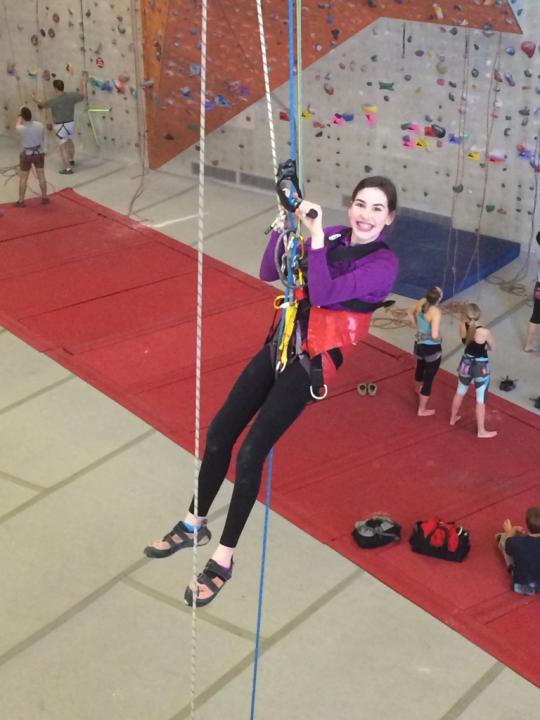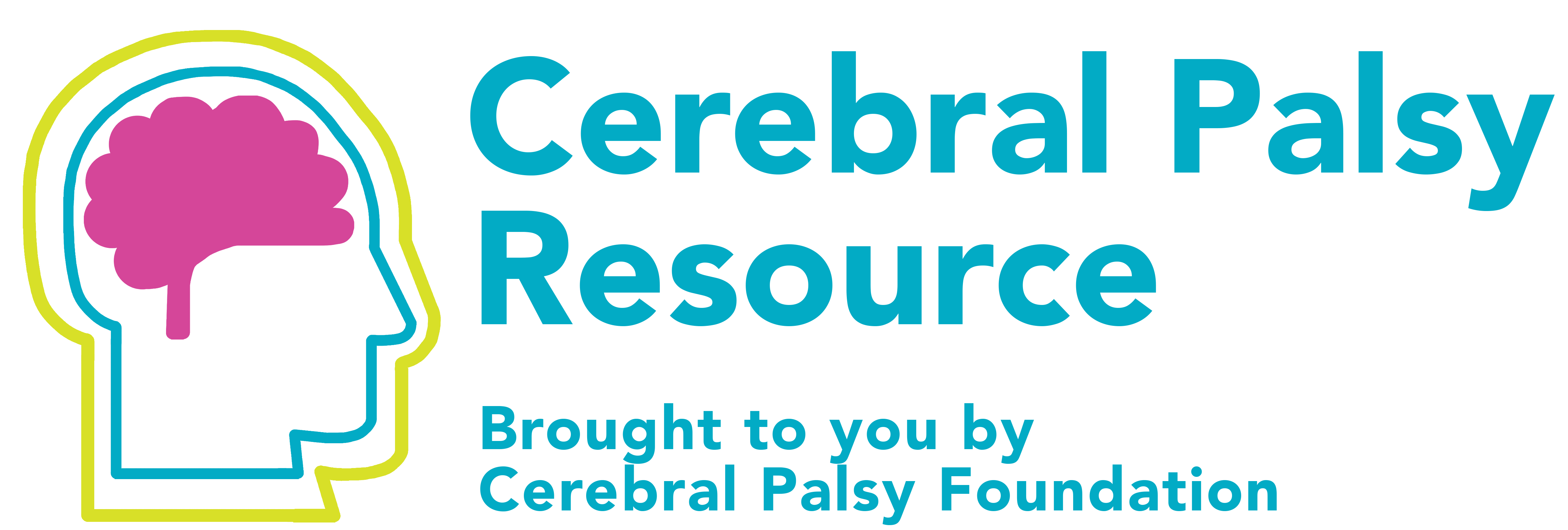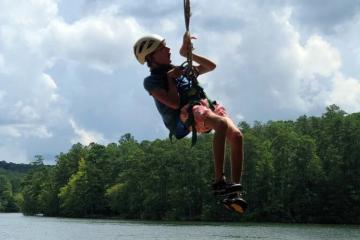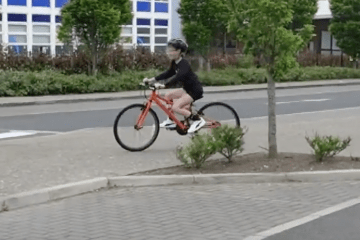Benefits of Evidence-Based Physical Activity for People with Cerebral Palsy

Research suggests that exercise for people with disabilities, including cerebral palsy, can be even more important than for those without a disability. Why? People with cerebral palsy are 1.5 times more likely to experience cardiovascular disease-related conditions such as diabetes, hypercholesterolemia, hypertension, and stroke (1) and roughly 20% will experience metabolic syndrome by the time they reach middle-adulthood (2). These conditions are believed to be caused by a lack of participation in regular moderate-intensity exercise behavior (3). There is preliminary evidence to suggest that exercise can relieve pain and fatigue, two common secondary conditions among cerebral palsy(4, 5). Exercise may also improve spasticity, range of motion, and mobility (6)! Thus, it’s particularly important for people with physical disabilities to get moving on a regular basis in order to live long, healthy lives. Remember, exercise is important to improve health, but also maintain health!
What kind of physical activities are beneficial for people with cerebral palsy?
There are many kinds of physical activities that people with cerebral palsy can participate in – for both ambulatory people as well those who use various mobility devices. Let’s look at the available research to make an evidence-based decision.
This article summarizes the types of physical activities that have been studied in research for cerebral palsy, as well as the benefits that can be expected participating in physical activity (6).
Summary:
1. Regular participation in physical activity by people with cerebral palsy over a period of 1-2 months can improve the following:
- musculoskeletal strength
- cardiorespiratory fitness or endurance
- quality of life
- spasticity
- general physical function, including functional mobility and walking performance
2. Types of physical activity with evidence to support their benefits include:
- Strength training
- Aerobic training (e.g., walking or cycling)
- Active video games
- A variety of adaptive sports and recreation, as well as leisure activities
3. Behavioral coaching can enhance the likelihood of engaging people with cerebral in physical activity.
- Behavioral coaching can include strategies to change behavior, such as promoting high self-confidence, goal setting, and planning
4. Telehealth programs of physical activity are safe, beneficial, and accessible. For example, a study by Mitchell and colleagues (7) suggested that web-based training with a virtual coach through videoconference could improve activity capacity, functional strength, and walking endurance. Another study by Rimmer and colleagues (8) demonstrated that phone call coaching plus web-based support could improve body weight in a group of people that included cerebral palsy. These are very convenient programs since they do not require transportation to a fitness facility.
5. There were essentially no studies that demonstrated that exercise was unsafe for people with cerebral palsy. Exercise and physical activity is for everyone!
Tips for Families and Individuals with Cerebral Palsy:
- For adults, do your best to try and reach 150 minutes per week of moderate-to-vigorous intensity physical activity. For children, help your child try and reach 60 minutes per day of moderate-to-vigorous intensity physical activity. These are the same guidelines set for the general population to receive health benefits (9). Weight loss might require a higher volume of exercise. Do note that these guidelines, particularly the 60 minutes per day for children, might not always be possible. Do not be discouraged by this, just remember that SOME IS ALWAYS BETTER THAN NONE.
- Cerebral palsy specific guidelines for aerobic endurance training: A review study by Verschuren and colleagues (10) noted that: “According to the existing intervention studies, [aerobic] exercise prescription for people with CP should include: (1) a minimum frequency of 2–3 times per week; (2) an intensity between 60–95% of peak heart rate, or between 40–80% of the HRR, or between 50–65% of VO2peak; and (3) a minimum time of 20 minutes per session, for at least 8 consecutive weeks, when training three times a week, or for 16 consecutive weeks when training two times a week. Moreover, a pre-workout warm-up and cool-down could be added to reduce musculoskeletal injury.”
- Cerebral palsy specific guidelines for strength training: Verschuren and colleagues (10) also reported that “prescription of resistance exercise for persons with CP should include a ‘familiarization’ period, in which very low dosage training (i.e. minimal volume and intensity) occurs twice a week for at least 2–4 weeks.” After the familiarization phase of training, it may be expected that individuals with CP could safely benefit from gradual increases in dosage to accommodate improvements in strength, endurance, and function. Complex, multi-joint activities (like step-ups and sit-to-stand exercises) could also be added at this time. We recommend performing 1–4 sets of 6–15 repetitions, and gradually progress to meet the demands of improved muscular fitness. It is also important that the programs last sufficiently long to incorporate these two phases of training. Assuming a minimum of 8 weeks to experience changes in strength with simple activities, we would suggest a program of at least 12–16 weeks in order to maximize the likelihood of a training effect in people with CP.”
- When in doubt of whether an exercise is safe or appropriate, contact a trained exercise instructor who has experience working with people with physical disabilities. NCHPAD.org is a good resource to find trained and certified providers. Another option is to look for adaptive sports and recreation programs in your local community. MoveUnited is a good source for these programs www.moveunited.org
- Many of the benefits that are obtained from exercise may not be easily observable or noticeable right away. Know that exercise is important for prevention as well as improvement and has many other benefits, such as improving psychological (e.g., depression, self-confidence) and social (e.g., building friendships with peers and trainers) health across the lifespan and for people of all ability levels.
Exercise and Physical Activity Ideas for People with Cerebral Palsy
- Active video gaming
- Strength Training
- Cycling
- Adaptive CrossFit
- Yoga
- Dance
- Walking/Running
- Frame Running (Race Running)
- Swimming
- Horseback riding
- Adaptive Rock climbing
- Archery
- Adaptive Skiing
If you are parent or caregiver of a child with cerebral palsy, encourage your child to participate in whatever sport or activity they’re interested in. Chances are, there’s an adaptive version of it.
Cerebral palsy can definitely make participating in some physical activities more difficult. However, with the right resources and support, you or your child can learn how to safely participate and live a more active lifestyle.
Article Details:
The summary above is from a research review paper published by Byron Lai, PhD, James Rimmer, PhD, and other colleagues, which can be found here: https://onlinelibrary.wiley.com/doi/abs/10.1111/dmcn.14751
The review included only randomized controlled trials of physical activity programs for people with cerebral palsy. Randomized controlled trials are generally considered to be one of the highest levels of evidence for testing a physical activity program. The review included forty‐nine studies that enrolled a total of 1513 participants. The review also highlights the limitations in the available research studies, of which there were many.
*It is important to note that the general quality of exercise research for cerebral palsy is currently low, and that the findings of the studies and this summary should be interpreted with that in mind. Most research studies supported strength and aerobic training and included ambulatory people with cerebral palsy. There is a need to create more physical activity programs for people with cerebral palsy including those do not walk or use wheelchairs. That being said, there were some physical activity programs that were beneficial for people who used wheelchairs or were less mobile, and the evidence for benefits is almost the same as for people who are ambulatory. Of note, there were not many studies for adults with cerebral palsy compared with children, and there needs to be more options for research of programs for adults moving forward.
References:
1. Peterson MD, Ryan JM, Hurvitz EA, Mahmoudi E. Chronic conditions in adults with cerebral palsy. JAMA. 2015;314(21):2303-5.
2. Heyn PC, Tagawa A, Pan Z, Thomas S, Carollo JJ. Prevalence of metabolic syndrome and cardiovascular disease risk factors in adults with cerebral palsy. Developmental Medicine & Child Neurology. 2019;61(4):477-83.
3. Ryan JM, Crowley VE, Hensey O, Broderick JM, McGahey A, Gormley J. Habitual physical activity and cardiometabolic risk factors in adults with cerebral palsy. Res Dev Disabil. 2014;35(9):1995-2002.
4. Vogtle LK, Malone LA, Azuero A. Outcomes of an exercise program for pain and fatigue management in adults with cerebral palsy. Disability and rehabilitation. 2014;36(10):818-25.
5. Colquitt G, Kiely K, Caciula M, Li L, Vogel RL, Moreau NG. Community-based upper extremity power training for youth with cerebral palsy: a pilot study. Physical and Occupational Therapy in Pediatrics. 2019.
6. Lai B, Lee E, Kim Y, Matthews C, Swanson-Kimani E, Davis D, et al. Leisure-time physical activity interventions for children and adults with cerebral palsy: a scoping review. Developmental Medicine & Child Neurology. 2020.
7. Mitchell LE, Ziviani J, Boyd RN. A randomized controlled trial of web‐based training to increase activity in children with cerebral palsy. Developmental Medicine & Child Neurology. 2016;58(7):767-73.
8. Rimmer JH, Wang E, Pellegrini CA, Lullo C, Gerber BS. Telehealth weight management intervention for adults with physical disabilities: a randomized controlled trial. American Journal of Physical Medicine & Rehabilitation / Association of Academic Physiatrists. 2013;92(12):1084-94.
9. U.S. Department of Health and Human Services. Physical Activity Guidelines for Americans.. 2nd ed. Washington, DC2018.
10. Verschuren O, Peterson MD, Balemans AC, Hurvitz EA. Exercise and physical activity recommendations for people with cerebral palsy. Developmental Medicine & Child Neurology. 2016;58(8):798-808.
"It’s particularly important for people with physical disabilities to get moving on a regular basis in order to live long, healthy lives. Remember, exercise is important to improve health, but also maintain health!"





